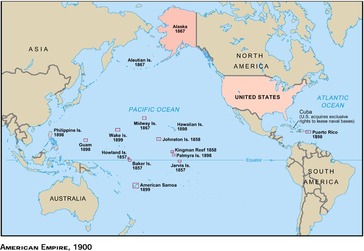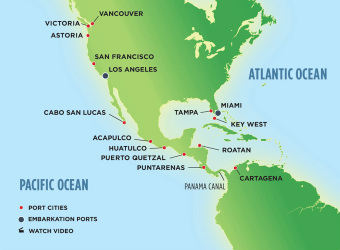McKinley & Roosevelt and Changing American Policy
The Spanish American War
The Spanish American War was the first time the United States got involved in overseas issues. They came to the defense of Cuba who was rebelling against Spain. The United States was successful and claimed the Phillippines, Guam and Puerto Rico as their own territories. Cuba gained its independence from Spain. You can also visit Mr.Nussbaum.com for details on the conflict. Another great resource on the Spanish American war is ushistory.org.
America's Changing View of the WorldUp until the Spanish American War, the United States had only worried about their own problems. They fought against Mexico to establish their southern border. Then Americans spent 5 years fighting against each other in the American Civil War. The next 20 years were spent recovering from the damage the Civil War had caused. William McKinley and Teddy Roosevelt the American Presidents at the turn of the century began involving the United States in foreign issues. America came to the defense of Cuba and also claimed several foreign territories as their own. Then America paid 375 million dollars to build a canal through the country of Panama to improve the ease of transportation.
|
The Panama Canal
William McKinley began work on creating a shortcut through Central America to improve the ability to transport goods to the west coast. He was assassinated and Teddy Roosevelt made the final agreements with Panama, for the canal to be built. It wasn't finished, however, until 1914. The canal is still an important transportation route. As a matter of fact, in 2007 work began to expand the canal so larger modern ships could also use the shortcut. You can find out more about how the canal works here.
You can find out more about Teddy Roosevelt by clicking on this link to ushistory.org. To learn more about the Panama Canal, click here. |
